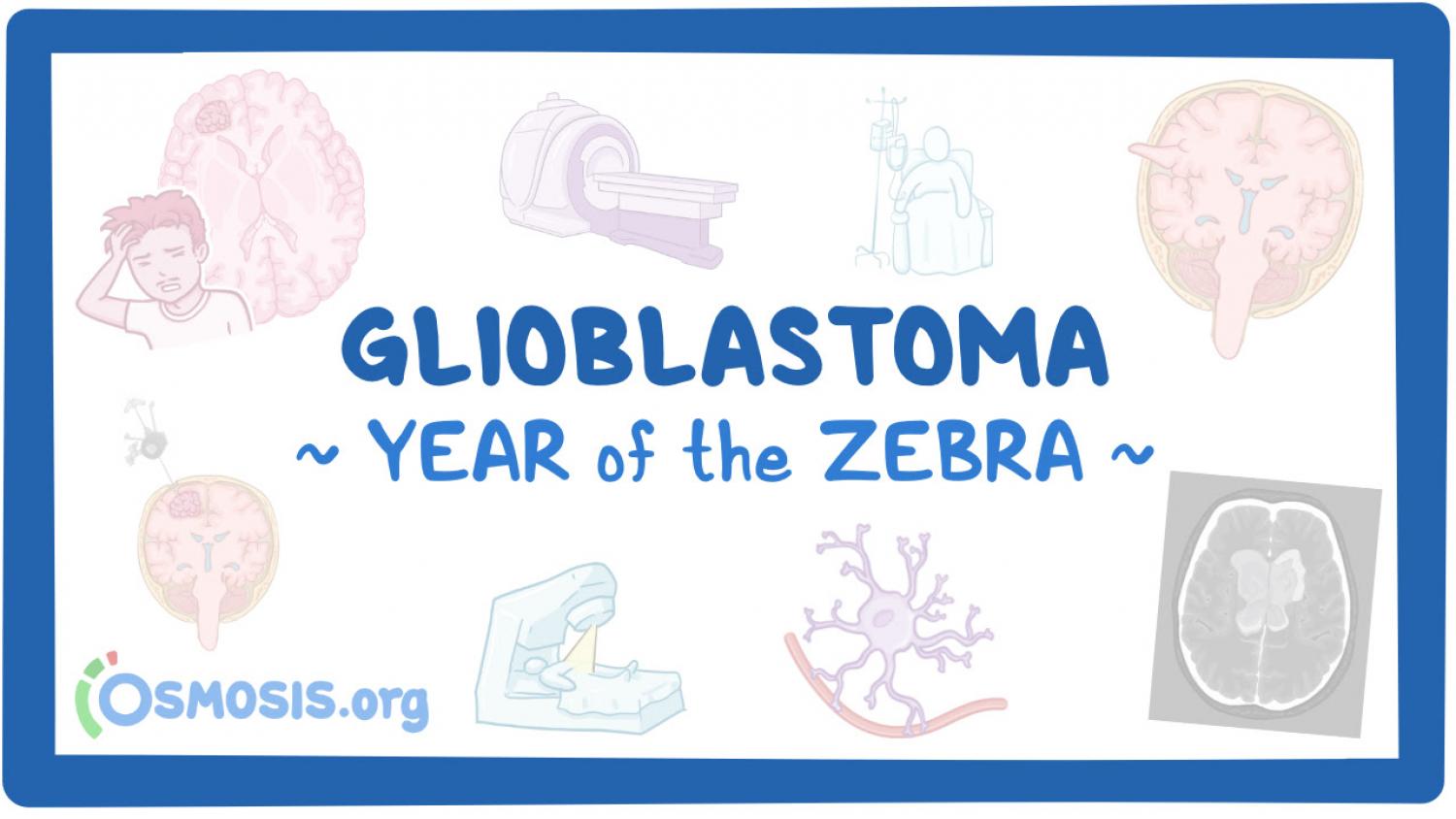
Rare Disease Education: Glioblastoma
Editor: Kelsey LaFayette, DNP, RN, FNP-C
"When you hear hoofbeats, think of horses, not zebras,” is a common saying in medical education that means you should think of common conditions first, instead of rare ones, in making a diagnosis. “Rare” is a relative term though and about 7,000 rare, or "zebra," conditions affect more than 350 million individuals worldwide. Although these conditions collectively affect an enormous number of people, each of these conditions individually is rare enough that it can be difficult to secure the resources to study them and to develop treatments and cures. Likewise, awareness of rare conditions may be low and health care professionals may not be familiar with their signs and symptoms making it more difficult to reach a correct diagnosis and provide effective treatments.
To increase knowledge about rare conditions, Osmosis and the National Organization for Rare Diseases (NORD) have collaborated on an initiative to bring education and awareness to the public. We are excited to be a part of this initiative because we believe everyone deserves quality health care, no matter how rare their condition.
Zebra of the Week: Glioblastoma
Most of us live our lives according to our plans and expectations. We have small goals for the day, overarching targets for the year, expectations for the decade, and dreams for the future. What we don’t realize is how fast things can change, and how our life plans have to sometimes adapt radically to new circumstances. This is the reality of this week’s zebra, Glioblastoma.
Glioblastomas are aggressive and malignant brain tumors that originate from a type of glial cell in the brain called an astrocyte. Usually, glioblastoma growth rate is characterized as grade IV on a scale from I to IV, indicating rapid tumor growth.
Glioblastomas can be located anywhere in the brain and do not regularly spread outside of the brain. Common symptoms include headaches, seizures, confusion, memory loss, muscle weakness, visual changes, language deficit and cognitive changes. The age group affected is usually older individuals aged 45 to 70 with rare occurrences in children. About 3 in every 100,000 people per year are affected by glioblastoma. Treatment methods typically include a combination of surgery, chemotherapy, radiation therapy and others.
To learn more about the diagnosis and treatment of Glioblastoma, watch the dedicated Osmosis video on YouTube and Osmosis.org
Meet Ryan Masales, police officer
Ryan’s wife Estellize describes him as the best thing she ever found. This young police officer is a father of 7-year old Ryder. He lived a life caring for other people. His life was changed with a glioblastoma diagnosis in the language center of his brain. He fought calmly and valiantly, supported by his friends and family. He even had to undergo brain surgery while awake to make sure the area where the tumor was growing were as minimally affected as possible. Watch his touching story above.
Organization Taking Strides
In 2008, the National Brain Tumor Society (NBTS) emerged from the union of two legacy organizations: the National Brain Tumor Foundation and the Brain Tumor Society. Both were founded in the 1980s by parents who tragically lost their sons to brain tumors. Today, after two more organizations joined the National Brain Tumor Society, it stands as a powerhouse of resources and research for patients and their families affected by brain tumors.
It is committed to driving strategic research, influencing public policy agendas, and providing support and education to patients and caregivers. The organization funds pioneering research to discover new treatments and ultimately, a cure, for brain tumors. The society also plays a crucial role in advocating for the needs of the brain tumor community, working to secure policies and legislation that promote the development of new therapies and improve access to quality care. Additionally, the NBTS offers a range of resources and programs to support, educate, and empower patients, caregivers, and their families throughout their journey, fostering a sense of community and hope. Follow their journey and learn how you can help on their website.
